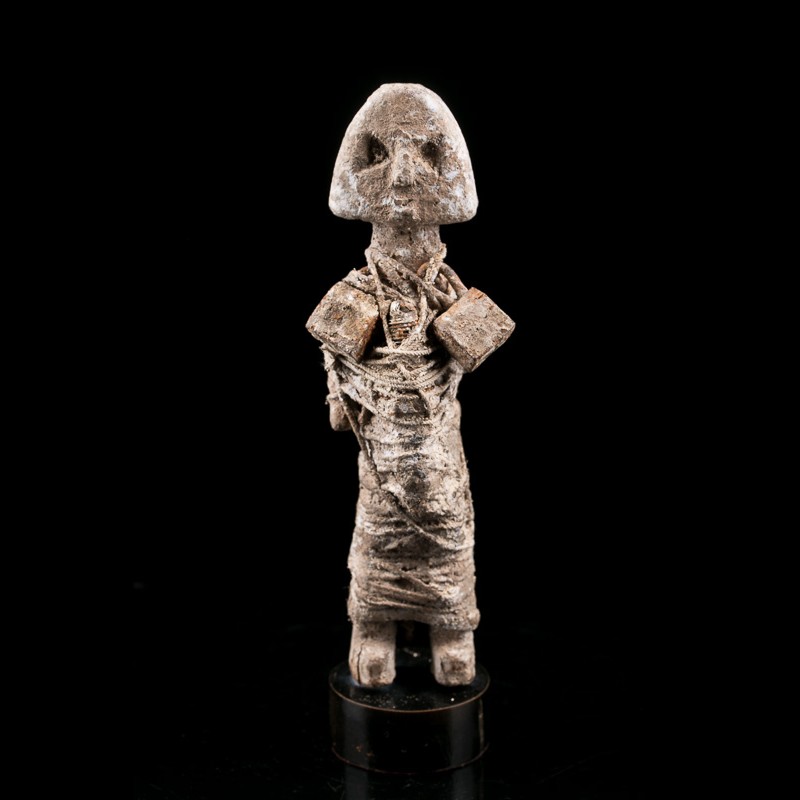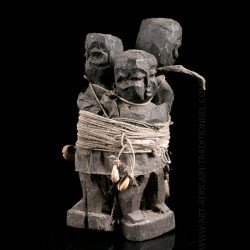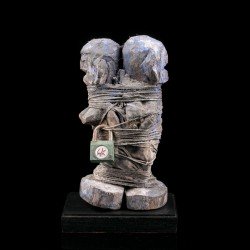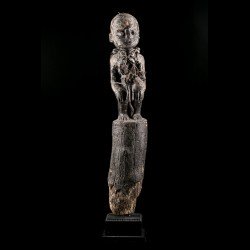












A wooden figure of indeterminate sex with a distictive shaped head tapering from a pointed top to a wide, flat base. The facial features are simple, consisting of small, drilled eyes, a small nose and mouth. Around the body is entwined a series of cloth strips and to the top are two wooden amulets, possibly imitating Western padlocks. The entire surface of the exposed wood, and the cloth strips, are coated in a white substance, probably kaolin clay, as part of the ceremonial use. Mounted on a custom made stand.
The Adan people are a small sub-group of the Ewe people, and they are believed to have migrated from Southern Egypt to Nigeria in the 15th century. The exact use of these figures is little understood, but it is generally believed that they are protective ancestor figures. They are often kept in a shrine, or sometimes in the eaves of houses and regularly taken out so that they can be honoured and supplicated for protection and good fortune. After the rituals have been completed the figures are coated in white kaolin, as in this example, and returned to the shrine or eaves. The padlock shaped amulets that are attached to this statue possibly reflect the use of real padlocks by other African peoples on their ancestor figures. The act of attaching a padlock reinforces and ritually seals the intentions and prayers of the supplicant.
Data sheet
You might also like

A wooden figure of indeterminate sex with a distictive shaped head tapering from a pointed top to a wide, flat base. The facial features are simple, consisting of small, drilled eyes, a small nose and mouth. Around the body is entwined a series of cloth strips and to the top are two wooden amulets, possibly imitating Western padlocks. The entire surface of the exposed wood, and the cloth strips, are coated in a white substance, probably kaolin clay, as part of the ceremonial use. Mounted on a custom made stand.
The Adan people are a small sub-group of the Ewe people, and they are believed to have migrated from Southern Egypt to Nigeria in the 15th century. The exact use of these figures is little understood, but it is generally believed that they are protective ancestor figures. They are often kept in a shrine, or sometimes in the eaves of houses and regularly taken out so that they can be honoured and supplicated for protection and good fortune. After the rituals have been completed the figures are coated in white kaolin, as in this example, and returned to the shrine or eaves. The padlock shaped amulets that are attached to this statue possibly reflect the use of real padlocks by other African peoples on their ancestor figures. The act of attaching a padlock reinforces and ritually seals the intentions and prayers of the supplicant.


